-
Posts
25,154 -
Joined
-
Last visited
Content Type
Profiles
Forums
Events
Articles
Posts posted by LITTLE MISS SUNSHINE
-
-
The Clash were an English punk band that formed in 1976 as part of the original wave of British punk rock. Along with punk, they experimented with reggae, ska, dub, funk, rap, dance and rockabilly. For most of their recording career, The Clash consisted of Joe Strummer (lead vocals, rhythm guitar), Mick Jones (lead guitar, vocals), Paul Simonon (bass, backing vocals, occasional lead vocals) and Nicky "Topper" Headon (drums, percussion). Headon left the group in 1982, and internal friction led to Jones's departure the following year. The group continued with new members, but finally disbanded in early 1986.
The Clash were a major success in the UK from the release of their debut album, The Clash, in 1977. Their third album, London Calling, released in the UK in December 1979, brought them popularity in the United States when it came out there the following month. Critically acclaimed, it was declared the best album of the 1980s a decade later by Rolling Stone magazine.[1]
The Clash's politicized lyrics, musical experimentation and rebellious attitude had a far-reaching influence on rock, alternative rock in particular.[2] They became widely referred to as "The Only Band That Matters", originally a promotional slogan introduced by the group's record label, CBS. In January 2003, the band…quot;including original drummer Terry Chimes…quot;were inducted into the Rock and Roll Hall of Fame. In 2004, Rolling Stone ranked The Clash number 30 on their list of the 100 Greatest Artists of All Time
History
Origins: 1974…quot;1976
Before The Clash's founding, the band's future members were active in different parts of the London music scene. John Graham Mellor sang and played rhythm guitar in the pub rock act The 101'ers, which formed in 1974. By the time The Clash came together two years later, he had already abandoned his original stage name, "Woody" Mellor, in favour of "Joe Strummer", a reference to his rudimentary strumming skills on the ukulele as a busker in the London Underground. Mick Jones played guitar in legendary protopunk band London SS, which rehearsed for much of 1975 without ever playing a live show and recording only a single demo. London SS was managed by Bernard Rhodes, a sometime associate of impresario Malcolm McLaren and a friend of the band McLaren managed, the Sex Pistols. Jones and his bandmates became friendly with Sex Pistols Glen Matlock and Steve Jones, who would assist them as they tried out potential new members.[4] Among those who auditioned for London SS without making the cut were Paul Simonon, who tried out as a vocalist,[5] and drummer Terry Chimes. Nicky Headon drummed with the band for a week, then quit.[6]
After London SS broke up in early 1976, Rhodes continued as Jones's manager. In February, Jones saw the Sex Pistols perform for the first time: "You knew straight away that was it, and this was what it was going to be like from now on. It was a new scene, new values…quot;so different from what had happened before. A bit dangerous."[7] At the instigation of Rhodes, Jones contacted Simonon in March, suggesting he learn an instrument so he could join the new band Jones was organising.[5] Soon Jones, Simonon on bass, Keith Levene on guitar and "whoever we could find really to play the drums" were rehearsing.[8] Chimes was asked to audition for the new band and got the job, although he soon quit.[9]
The act was still searching for a lead singer. Chimes recalls one Billy Watts (who "seemed to be, like, nineteen or eighteen then, as we all were") handling the duties for a time.[10] Rhodes had his eye on Strummer, with whom he made exploratory contact. Jones and Levene had both seen him perform and were impressed as well.[11] Strummer, for his part, was primed to make the switch. In April, he had taken in the opening act for one of his band's gigs. That act was the Sex Pistols. "I knew something was up," Strummer later explained,
so I went out in the crowd which was fairly sparse. And I saw the future…quot;with a snotty handkerchief…quot;right in front of me. It was immediately clear. Pub rock was, "Hello, you bunch of drunks, I'm gonna play these boogies and I hope you like them." The Pistols came out that Tuesday evening and their attitude was "Here's our tunes, and we couldn't give a flying fuck whether you like them or not. In fact, we're gonna play them even if you fucking hate them."On 30 May, Rhodes and Levene met surreptitiously with Strummer after a 101'ers gig. Rhodes gave him 48 hours to make up his mind whether he wanted to join the new band that would "rival the Pistols". When Rhodes rang him up a day early demanding an immediate answer, Strummer agreed.[13] Simonon later remarked, "Once we had Joe on board it all started to come together."[8] Strummer introduced the band to his old school friend, Pablo LaBritain, who sat in on drums during Strummer's first few rehearsals with the group. LaBritain's stint with the band didn't last long (he subsequently joined 999), and Rhodes asked Terry Chimes to rejoin.[14] Chimes did not take to Strummer at first: "He was like twenty-two or twenty-three or something that seemed 'old' to me then. And he had these retro clothes and this croaky voice".[10] Simonon came up with the band's name after they had briefly dubbed themselves the Weak Heartdrops and the Psychotic Negatives.[15][16] He later explained the name's origin: "It really came to my head when I started reading the newspapers and a word that kept recurring was the word 'clash', so I thought 'The Clash, what about that,' to the others. And they and Bernard, they went for it."[15]
First gigs and the growing scene: 1976
After rehearsing with Strummer for less than a month, The Clash made their debut on 4 July 1976, supporting the Sex Pistols at the Black Swan pub in Sheffield. The band apparently wanted to make it on-stage before their rivals in The Damned…quot;another London SS spinoff…quot;made their own scheduled debut two days later. The Clash would not play in front of an audience again for another five weeks.[17] Levene was becoming disaffected with his position in the group. At the Black Swan, he approached the Sex Pistols' lead singer, John Lydon (then going by Johnny Rotten), and suggested they get a band together if the Pistols ever broke up.[18]
The night after their debut, the band members along with most of the Sex Pistols and much of the rest of London's "inner circle" of punks showed up at Dingwalls club to attend a concert by New York's leading punk rock band, the Ramones. Afterward "came the first example of the rivalry-induced squabbling that was to dog the punk scene and undermine any attempts to promote a spirit of unity among the bands involved."[19] Simonon got into a scuffle with J.J. Burnel, the bass player of The Stranglers. A slightly older band, The Stranglers were publicly identified with the punk scene, but were not part of the "inner circle" centred on the Sex Pistols.[19]
With Rhodes insisting that the band not perform live again until they were much tighter, The Clash rehearsed intensely over the following month. Strummer and Jones shared most of the writing duties…quot;"Joe would give me the words and I would make a song out of them", Jones later said.[20] Sometimes they would meet in the office over their Camden rehearsal studio to collaborate directly.[19] According to a later description of Strummer's, "Bernie [Rhodes] would say, 'An issue, an issue. Don't write about love, write about what's affecting you, what's important."[21] Strummer took the lead vocals on the majority of songs; in some cases he and Jones shared the lead. Once the band began recording, Jones would rarely have a solo lead on more than one song per album, but he would wind up responsible for two of the group's biggest hits. On 13 August, The Clash…quot;sporting a paint-spattered "Jackson Pollock" look…quot;played before a small, invitation-only audience in their Camden studio.[22] Among those in attendance was Sounds critic Giovanni Dadamo. His review described the band as a "runaway train...so powerful, they're the first new group to come along who can really scare the Sex Pistols shitless".[23]
On 29 August, The Clash and Manchester's Buzzcocks opened for the Sex Pistols at the Screen on the Green…quot;The Clash's first public performance since 4 July. The triple bill is seen as pivotal to the British punk scene's crystallisation into a movement.[24] In early September, Levene was kicked out of The Clash. Strummer would claim that Levene's dwindling interest in the band owed to his supposedly abundant use of speed, a charge Levene has denied.[25] (Levene and Lydon would form Public Image Ltd.. in 1978.) On 21 September, The Clash performed publicly for the first time without Levene at another seminal concert: the 100 Club Punk Special, sharing the bill with the Sex Pistols, Siouxsie and the Banshees and Subway Sect.[26] Chimes left in late November; he was briefly replaced by Rob Harper as The Clash toured in support of the Sex Pistols during December's Anarchy Tour.[27]
Debut album and Give 'Em Enough Rope: 1977…quot;1979
By the turn of the year, punk had become a major media phenomenon in the UK. On 25 January 1977, The Clash signed to CBS Records for £100,000, a remarkable amount for a band that had played a total of about thirty gigs and almost none as a headliner.[28] As Clash historian Marcus Gray describes, the "band members found themselves having to justify [the deal] to both the music press and to fans who picked up on the critics' muttered asides about The Clash having 'sold out' to the establishment."[29] Mark Perry, founder of the leading London punk periodical, Sniffin' Glue, let loose with what he would later call his "big quote": "Punk died the day The Clash signed to CBS."[30] As one band associate described it, the deal "was later used as a classic example of the kind of contract that no group should ever sign…quot;the group had to pay for their own tours, recordings, remixes, artwork, expenses...."[31]
Mickey Foote, who worked as a technician at their concerts, was hired to produce The Clash's debut album, and Terry Chimes was drafted back for the recording. The band's first single, "White Riot", was released in March 1977; the album, The Clash, came out the following month. Filled with fiery punk tracks, it also presaged the many eclectic turns the band would take with its cover of the reggae song "Police and Thieves". "[A]midst the Sex Pistols' inertia in the first half of 1977, the Clash found themselves as the flag-wavers of the punk rock consciousness", according to music journalist and former punk musician John Robb.[32] Though both the single and album charted well in the UK…quot;"White Riot" reached number 34, The Clash number 12…quot;CBS refused to release either in the United States, saying that the sound was not “radio friendly”.[33] A US version of the album with a modified track listing was released in 1979, after the UK original became the best-selling import album of all time in the United States.[34] Chimes left the band again soon after the recording, so only Simonon, Jones and Strummer were featured on the album's cover, and Chimes was credited as "Tory Crimes". In the documentary Westway to the World, Jones referred to him as one of "the best drummers around". Chimes, who had no great wish to make a career from music, said, "The point was that I wanted one kind of life…quot;they wanted another, and why are we working together, if we want completely different things?"[33]
The band went through several drummers, with Jones handling the duties for a time.[35] They finally recruited Nicky Headon, who had played briefly with Jones's London SS two years before. Headon was nicknamed "Topper" by Simonon, who felt he resembled the Topper comic book character Mickey the Monkey. An excellent musician, Headon could also play piano, bass and guitar. He originally planned to stay briefly, gain a name for himself, and then find a better band. Realising The Clash's potential, he changed his plans. Strummer later observed, "If we hadn't found Topper, I don't think we'd have got anywhere".[33] In May, the band set out on the White Riot Tour, headlining a punk package that included the Buzzcocks, Subway Sect, The Slits and The Prefects.[36] The day after a Newcastle gig, Strummer and Headon were arrested for stealing pillowcases from their hotel room.[37] That same month, CBS released "Remote Control" as the debut LP's second single, defying the wishes of the band, who saw it as one of the album's weakest tracks.[38]
Headon's first recording with the band was the single "Complete Control", which addressed the band's anger at their record label's behavior. It was co-produced by famed reggae artist Lee "Scratch" Perry, but Foote was summoned to "ground things" a bit and the result was pure punk rock. Released in September 1977…quot;NME noted how CBS allowed the group to "bait their masters"…quot;it rose to number 28 on the British chart and has gone on to be cited as one of punk's greatest singles.[39] In February 1978, the band came out with the single "Clash City Rockers". June saw the release of "(White Man) In Hammersmith Palais", which surprised fans with its ska rhythm and arrangement.
Before The Clash began recording their second album, CBS requested that they adopt a cleaner sound than its predecessor in order to reach American audiences. Sandy Pearlman, known for his work with Blue Öyster Cult, was hired to produce the record. Although some complained about its relatively mainstream production style, Give 'Em Enough Rope received largely positive reviews upon its November release.[40] It hit number 2 in the UK, but it was not the American breakthrough CBS had hoped for, reaching only number 128 on the Billboard chart. The album's first UK single, the hard rocking "Tommy Gun", rose to number 19, the highest chart position for a Clash single to date. In support of the album, the band undertook its first, largely successful tour of North America in February 1979.[41]
London Calling, Sandinista! and Combat Rock: 1979…quot;1982
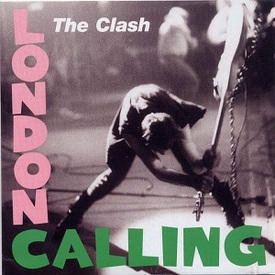 The "iconic" cover of London Calling[42][43]In August and September 1979, The Clash recorded London Calling. Produced by Guy Stevens, who had previously worked with Mott the Hoople and others, the double album was a mix of punk rock, reggae, ska, rockabilly, traditional rock and roll and other elements possessed of an energy that had hardly flagged since the band's early days and more polished production.[44][45] It is regarded as one of the greatest rock albums ever recorded.[46] Its final track, a relatively straightforward rock and roll number sung by Mick Jones called "Train in Vain", was included at the last minute and thus did not appear in the track listing on the cover. It turned out to be their first US Top 40 hit, peaking at number 23 on the Billboard chart. In the UK, where "Train in Vain" was not released as a single, London Calling's title track, stately in beat but unmistakably punk in message and tone, rose to number 11…quot;the highest position any Clash single reached in the UK before the band's breakup. London Calling reached number 9 on the British chart and number 27 on the US chart. The cover of the album, based on the cover of Elvis Presley's self-titled 1956 debut LP, became one of the best known in the history of rock.[43] Its image of Simonon smashing his bass guitar was later cited as the "best rock 'n roll photograph of all time" by Q magazine.[42] During this period, The Clash began to be regularly billed as "The Only Band That Matters". Musician Gary Lucas, then employed by CBS Records' creative services department, claims to have coined the tagline.[47] The epithet was soon widely adopted by fans and music journalists.[48]
The "iconic" cover of London Calling[42][43]In August and September 1979, The Clash recorded London Calling. Produced by Guy Stevens, who had previously worked with Mott the Hoople and others, the double album was a mix of punk rock, reggae, ska, rockabilly, traditional rock and roll and other elements possessed of an energy that had hardly flagged since the band's early days and more polished production.[44][45] It is regarded as one of the greatest rock albums ever recorded.[46] Its final track, a relatively straightforward rock and roll number sung by Mick Jones called "Train in Vain", was included at the last minute and thus did not appear in the track listing on the cover. It turned out to be their first US Top 40 hit, peaking at number 23 on the Billboard chart. In the UK, where "Train in Vain" was not released as a single, London Calling's title track, stately in beat but unmistakably punk in message and tone, rose to number 11…quot;the highest position any Clash single reached in the UK before the band's breakup. London Calling reached number 9 on the British chart and number 27 on the US chart. The cover of the album, based on the cover of Elvis Presley's self-titled 1956 debut LP, became one of the best known in the history of rock.[43] Its image of Simonon smashing his bass guitar was later cited as the "best rock 'n roll photograph of all time" by Q magazine.[42] During this period, The Clash began to be regularly billed as "The Only Band That Matters". Musician Gary Lucas, then employed by CBS Records' creative services department, claims to have coined the tagline.[47] The epithet was soon widely adopted by fans and music journalists.[48]The Clash planned to record and release a single every month in 1980. CBS balked at this idea, and the band came out with only one single…quot;an original reggae tune, "Bankrobber", in August…quot;before the December release of the 3-LP, 36-song Sandinista!!. The album again reflected a broad range of musical styles, including extended dubs and the first forays into rap by a major rock band. Produced by the band members with the participation of Jamaican reggae artist Mikey Dread, Sandinista! was their most controversial album to date, both politically and musically.[49] Critical opinion was divided, often within individual reviews. Trouser Press's Ira Robbins described half the album as "great", half as "nonsense" and worse.[50] In the New Rolling Stone Record Guide, Dave Marsh argued, "Sandinista! is nonsensically cluttered. Or rather seems nonsensically cluttered. One of the Clash's principal concerns...is to avoid being stereotyped."[51] The album fared well in America, charting at number 24,[52] even though it had no catchy single and, in the increasingly conservative environment of album-oriented rock (AOR) radio in the US, received minimal airplay.[33]
During 1981, the band came out with a single, "This Is Radio Clash", that further demonstrated their ability to mix diverse influences such as dub and hip hop. They set to work on their fifth album in the fall, originally planning it as a 2-LP set with the title Rat Patrol from Fort Bragg. Mick Jones produced one cut, but the other members were dissatisfied. Production duties were handed to Glyn Johns, and the album was reconceived as a single LP. Though Combat Rock was filled with offbeat songs, experiments with sound collage, and a spoken word vocal by Beat poet Allen Ginsberg, it contained two "radio friendly" tracks. The leadoff single in the US was "Should I Stay or Should I Go", released in June 1982. Another Jones feature in a rock and roll style similar to "Train in Vain", it received heavy airplay on AOR stations. The follow-up, "Rock the Casbah", put lyrics addressing the Iranian clampdown on imports of Western music to a bouncy dance rhythm. (The singles were released in the opposite order in the UK, where they were both preceded by "Know Your Rights".) The music for "Rock the Casbah" was composed by Headon, who performed not only the percussion but also the piano and bass heard on the recorded version.[53] It was the band's biggest US hit ever, charting at number 8, and the video was put into heavy rotation by MTV.[33] The album itself was the band's most successful, hitting number 2 in the UK and number 7 in the US.
Disintegration: 1982…quot;1984
After Combat Rock, The Clash began to disintegrate. Topper Headon was asked to leave the band just prior to the release of the album, due to his heroin addiction, which was damaging his health and drumming.[33][54] The band's original drummer, Terry Chimes, was brought back for the next few months. The loss of Headon, well-liked by the others, exposed the growing frictions within the band. Jones and Strummer began to feud. The band opened for The Who on a leg of their final tour in the US, playing (among other places) New York's Shea Stadium. Though The Clash continued to tour, the personal tensions were increasing.[33]
In early 1983, Chimes left the band after the end of the Combat Rock Tour, due to the in-fighting and turmoil. He was replaced by Pete Howard for the US Festival in San Bernardino, California, which The Clash co-headlined, along with David Bowie and Van Halen. The band argued with the event's promoters over inflated ticket prices, threatening to pull out unless a large donation was made to a local charity. The group ultimately performed on 28 May, the festival's New Music Day, which drew a crowd of 140,000. After the show, members of the band brawled with security staff.[55] This was Jones's last appearance with the group. In September 1983, he was fired. Shortly thereafter, he became a founding member of General Public, but left that band as they were recording their first album. Jones then founded the long-lasting project Big Audio Dynamite.
Nick Sheppard, formerly of the Bristol-based Cortinas, and Vince White were selected as The Clash's new guitarists. Howard continued as the drummer. The reconstituted band played its first shows in January 1984 with a batch of new material and launched into the self-financed Out of Control Tour, travelling widely over the winter and into early summer. At a striking miners' benefit show ("Scargill's Christmas Party") in December 1984, they announced that a new record would be released early in the new year.
Cut the Crap, final breakup, and aftermath: 1985…quot;1991
The recording sessions for Cut the Crap were chaotic, with manager Bernard Rhodes and Strummer working in Munich. Most of the music was played by studio musicians, with Sheppard and later White flying in to provide guitar parts. Struggling with Rhodes for control of the band, Strummer returned home. The band went on a busking tour of public spaces in cities throughout the UK, playing acoustic versions of their hits and popular cover tunes.
After a gig in Athens, Strummer went to Spain to clear his mind. While he was abroad, the first single from Cut the Crap, the mournful "This Is England", was released to mostly negative reviews. "CBS had paid an advance for it so they had to put it out", Strummer later explained. "I just went, 'Well fuck this', and fucked off to the mountains of Spain to sit sobbing under a palm tree, while Bernie had to deliver a record."[12] However, critic Dave Marsh later championed "This Is England" as one of the top 1001 rock singles of all time.[56] The single has also received retroactive praise from Q magazine and others.
"This Is England", much like the rest of the album that came out later that year, had been drastically re-engineered by Rhodes, with synths and football-style chants added to Strummer's incomplete recordings. Although Howard was an adept drummer, drum machines were used for virtually all of the percussion tracks. For the remainder of his life, Strummer largely disowned the album,[54] although he did profess that "I really like 'This is England' [and album track] 'North and South' is a vibe."[12] Other songs played on the tour remain unreleased to this day, including "Jericho" and "Glue Zombie". The Clash effectively disbanded in early 1986.[45]
After the breakup, Strummer contacted Jones in an effort to reform The Clash. Jones, however, had already formed a new band, Big Audio Dynamite (B.A.D.), that had released its debut late in 1985. The two did work together on their respective 1986 projects. Jones helped out with the two songs Strummer wrote and performed for the Sid and Nancy soundtrack. Strummer, in turn, cowrote a number of the tracks on the second B.A.D. album, No. 10, Upping St.., which he also coproduced.[12] With Jones committed to B.A.D., Strummer moved on to various solo projects and screen acting work. Simonon formed a band called Havana 3am. Headon recorded a solo album, before once again spiraling into drug abuse. Chimes drummed with a succession of different acts.
On 2 March 1991, a reissue of “Should I Stay or Should I Go” gave The Clash its first and only number 1 UK single. That same year, Strummer reportedly cried when he learned that "Rock the Casbah" had been adopted as a slogan by US bomber pilots in the Gulf War.[57]
Collaborations and reunions: 1999…quot;present
In 1999, Strummer, Jones and Simonon cooperated in the compiling of the live album From Here to Eternity and video documentary Westway to the World. On 7 November 2002, the Rock and Roll Hall of Fame announced that The Clash would be inducted into the Hall the following spring.[58] On 15 November, Jones and Strummer shared the stage, performing three Clash songs during a London benefit show by Joe Strummer and the Mescaleros.[52] Strummer, Jones and Headon wanted to play a reunion show to coincide with their induction into the Hall. Simonon, however, did not want to participate because he believed that playing at the high-priced event would not have been in the spirit of The Clash. In the event, Strummer's sudden death from a congenital heart defect on 22 December 2002 ended any possibility of a full reunion. In March 2003, the Hall of Fame induction took place; the band members inducted were Strummer, Jones, Simonon, Chimes and Headon.[52]
In early 2008, Carbon/Silicon, the new band founded by Mick Jones and his former London SS bandmate Tony James, entered into a six-week residency at London's Inn on the Green. On opening night, 11 January, Headon joined the band for The Clash's "Train in Vain". An encore followed with Headon playing drums on "Should I Stay or Should I Go". This was the first time since 1982 that Headon and Jones had performed together on stage.[59]
Jones and Headon reunited in September 2009 to record the 1970s Clash B-side "Jail Guitar Doors" with Billy Bragg. The song is the namesake of a charity founded by Bragg which gives musical instruments and lessons to prison inmates. Jones, Headon, and Bragg were backed by former inmates during the session, which was filmed for a documentary about the charity, "Breaking Rocks."[60] Simonon and Jones featured on the title track of the Gorillaz album Plastic Beach in 2010. This reunion marked the first time the two performers had worked together professionally in over twenty years. They later joined the Gorillaz on tour for their "G-Club" shows in the United Kingdom.[61]
Politics
The band's music was often charged by a leftist political ideology.[62] Joe Strummer, in particular, was a committed leftist. The Clash are credited with pioneering the advocacy of radical politics in punk rock, and were famously dubbed the "Thinking Man's Yobs" by NME.[63] Like many early punk bands, The Clash protested against monarchy and aristocracy. However, unlike many of their peers, The Clash rejected nihilism.[34] Instead, they found solidarity with a number of contemporary liberation movements and were involved with such groups as the Anti-Nazi League. In April 1978, The Clash headlined the Rock Against Racism concert in London's Victoria Park for 80,000 people;[33] Strummer wore a T-shirt identifying two violent left-wing groups: the words "Brigade Rosse"…quot;Italy's Red Brigades…quot;appeared alongside the insignia of the Red Army Faction…quot;West Germany's Baader-Meinhof Gang.[64][65]
Their politics were made explicit in the lyrics of such early recordings as "White Riot", which encouraged disaffected white youths to become politically active like their black counterparts; "Career Opportunities", which addressed the alienation of low-paid, routinised jobs and discontent over the lack of alternatives; and "London's Burning", about the bleakness and boredom of life in the inner city.[45] Artist Caroline Coon, who was associated with the punk scene, argued that "[t]hose tough, militaristic songs were what we needed as we went into Thatcherism".[66] The scope of the band's political interests widened on later recordings. The title of Sandinista! celebrated the left-wing rebels who had recently overthrown Nicaraguan despot Anastasio Somoza Debayle, and the album was filled with songs driven by other political issues extending far beyond British shores: "Washington Bullets" addressed covert military operations around the globe, while the "The Call-Up" was a meditation on US draft policies.[67] Combat Rock's "Straight to Hell" is described by scholars Simon Reynolds and Joy Press as an "around-the-world-at-war-in-five-verses guided tour of hell-zones where boy-soldiers had languished."[68]
The band's political sentiments were reflected in their resistance to the music industry's usual profit motivations; even at their peak, tickets to shows and souvenirs were reasonably priced.[34] The group insisted that CBS sell their double and triple album sets London Calling and Sandinista! for the price of a single album each (then £5), succeeding with the former and compromising with the latter by agreeing to sell it for £5.99 and forfeit all their performance royalties on its first 200,000 sales.[33][69] These "VFM" (value for money) principles meant that they were constantly in debt to CBS, and only started to break even around 1982.[1]
Legacy and influence
In 2004, Rolling Stone ranked The Clash number 30 on their list of the 100 Greatest Artists of All Time.[3] According to The Times, The Clash's debut, alongside Never Mind the Bollocks, Here's the Sex Pistols, is "punk's definitive statement" and London Calling "remains one of the most influential rock albums".[65] In Rolling Stone's 2003 list of the 500 greatest albums of all time, London Calling ranked number 8, the highest entry by a punk band. The Clash was number 77 and Sandinista! was number 404.[70] In the magazine's 2004 list of the 500 greatest songs of all time, "London Calling" ranked number 15, again the highest for any song by a punk band. Four other Clash songs made the list: "Should I Stay Or Should I Go" (228), "Train In Vain" (292), "Complete Control" (361), and "White Man In Hammersmith Palais" (430).[71] "London Calling" ranked number 48 in the magazine's 2008 list of the 100 greatest guitar songs of all time.[72]
In John Robb's description, The Clash's debut established the "blueprint for the sound and the soul of what punk rock would be about.... The Clash were utterly inspirational, utterly positive, and they offered a million possibilities."[73] Jake Burns of Stiff Little Fingers, the first major punk band from Northern Ireland, explained the record's impact:
[T]he big watershed was The Clash album…quot;that was go out, cut your hair, stop mucking about time, y'know. Up to that point we'd still been singing about bowling down California highways. I mean, it meant nothing to me. Although The Damned and the Pistols were great, they were only exciting musically; lyrically, I couldn't really make out a lot if it.... [T]o realise that [The Clash] were actually singing about their own lives in West London was like a bolt out of the blue.The Clash also inspired many musicians who were only loosely associated, if at all, with punk. The band's embrace of ska, reggae and England's Jamaican subculture helped provide the impetus for the 2 Tone movement that emerged amid the fallout of the punk explosion.[75] Other musicians who began performing while The Clash were active and acknowledged their debt to the band include Billy Bragg and Aztec Camera.[76] U2's The Edge has compared The Clash's inspirational effect to that of the Ramones…quot;both gave young rock musicians at large the "sense that the door of possibility had swung open."[77] He wrote, "The Clash, more than any other group, kick-started a thousand garage bands across Ireland and the U.K.... eeing them perform was a life-changing experience."[3] Bono has described The Clash as "the greatest rock band. They wrote the rule book for U2."[78]
In later years, The Clash's influence can be heard in American political punk bands such as Rancid, Anti-Flag, Bad Religion, NOFX, and Green Day, as well as in the political hard rock of early Manic Street Preachers.[79] California's Rancid, in particular, are known as "incurable Clash zealots".[80] The title track of the band's album Indestructible proclaims, "I'll keep listening to that great Joe Strummer!"[81] The Clash's involvement with Jamaican musical and production styles has inspired similar cross-cultural efforts by bands such as Bad Brains, Massive Attack, Sublime and No Doubt.[82] They are credited with laying the groundwork for LCD Soundsystem's "punk-funk".[83] Jakob Dylan of The Wallflowers ranked London Calling above the work of his father, Bob Dylan, as the record that “changed his life”.[65] Bands identified with the garage rock revival of the late 1990s and 2000s such as Sweden's The Hives, Australia's The Vines and America's The White Stripes and The Strokes evidence The Clash's influence.[84] Among the many latter-day British acts identified as having been inspired by The Clash are Babyshambles, The Futureheads, The Charlatans and The Arctic Monkeys.[83] Before M.I.A. had an international hit in 2008 with "Paper Planes", which is built around a sample from "Straight to Hell", she referenced "London Calling" on 2003's "Galang".[83] A cover of "The Guns of Brixton" by German punk band Die Toten Hosen was released as a single in 2006.
The band has also had a notable impact on music in the Spanish-speaking world. In 1997, a Clash tribute album featuring performances by Buenos Aires punk bands was released.[85] Many rock en español bands such as Todos Tus Muertos, Café Tacuba, Maldita Vecindad, Los Prisioneros, Tijuana No, and Attaque 77 are indebted to The Clash.[86][87] Argentina's Los Fabulosos Cadillacs covered London Calling's "Revolution Rock" and "The Guns of Brixton" and invited Mick Jones to sing on their "Mal Bicho".[87] The Clash's influence is similarly reflected in Paris-founded Mano Negra's politicised lyrics and fusion of musical styles.[88]
Members
1976
-
Joe Strummer …quot; lead vocals, rhythm guitar
-
Mick Jones …quot; lead guitar, vocals
-
Keith Levene …quot; lead guitar
-
Paul Simonon …quot; bass guitar, backing vocals
-
Terry Chimes …quot; drums, percussion
1976
- Joe Strummer …quot; lead vocals, rhythm guitar
- Mick Jones …quot; lead guitar, vocals
- Paul Simonon …quot; bass guitar, backing vocals
- Terry Chimes …quot; drums, percussion
1976
- Joe Strummer …quot; lead vocals, rhythm guitar
- Mick Jones …quot; lead guitar, vocals
- Paul Simonon …quot; bass guitar, backing vocals
-
Rob Harper …quot; drums, percussion
1977
- Joe Strummer …quot; lead vocals, rhythm guitar
- Mick Jones …quot; lead guitar, vocals
- Paul Simonon …quot; bass guitar, backing vocals
- Terry Chimes …quot; drums, percussion
1977…quot;1982
- Joe Strummer …quot; lead vocals, rhythm guitar
- Mick Jones …quot; lead guitar, vocals
- Paul Simonon …quot; bass guitar, backing vocals
-
Topper Headon …quot; drums, percussion
1982…quot;1983
- Joe Strummer …quot; lead vocals, rhythm guitar
- Mick Jones …quot; lead guitar, vocals
- Paul Simonon …quot; bass guitar, backing vocals
- Terry Chimes …quot; drums, percussion
1983
- Joe Strummer …quot; lead vocals, rhythm guitar
- Mick Jones …quot; lead guitar, vocals
- Paul Simonon …quot; bass guitar, backing vocals
- Pete Howard …quot; drums, percussion
1983…quot;1986
- Joe Strummer …quot; lead vocals, rhythm guitar
-
Nick Sheppard …quot; lead guitar, backing vocals
-
Vince White …quot; lead guitar
- Paul Simonon …quot; bass guitar, backing vocals
- Pete Howard …quot; drums, percussion
Discography
Main article: The Clash discographyStudio albums
-
The Clash (1977)
-
Give 'Em Enough Rope (1978)
-
London Calling (1979)
-
Sandinista!! (1980)
-
Combat Rock (1982)
-
Cut the Crap (1985)
-
Joe Strummer …quot; lead vocals, rhythm guitar
-
The Cure are an English rock band formed in Crawley, West Sussex in 1976. The band has experienced several line-up changes, with frontman, vocalist, guitarist and principal songwriter Robert Smith being the only constant member. The Cure first began releasing music in the late 1970s with its debut album Three Imaginary Boys (1979); this, along with several early singles, placed the band as part of the post-punk and New Wave movements that had sprung up in the wake of the punk rock revolution in the United Kingdom. During the early 1980s, the band's increasingly dark and tormented music helped form the gothic rock genre.
After the release of Pornography (1982), the band's future was uncertain and Smith was keen to move past the gloomy reputation his band had acquired. With the 1982 single "Let's Go to Bed" Smith began to place a pop sensibility into the band's music (as well as a unique stage look). The Cure's popularity increased as the decade wore on, especially in the United States where the songs "Just Like Heaven", "Lovesong" and "Friday I'm in Love" entered the Billboard Hot 100 chart. By the start of the 1990s, The Cure were one of the most popular alternative rock bands in the world. The band is estimated to have sold 27 million albums as of 2004.[6] The Cure have released thirteen studio albums, 10 EPs and over thirty singles during the course of their career. Since 2010, they have been working on a fourteenth studio album.
Discography
- Three Imaginary Boys (1979)
- Seventeen Seconds (1980)
- Faith (1981)
- Pornography (1982)
- The Head on the Door (1985)
- Kiss Me, Kiss Me, Kiss Me (1987)
- Disintegration (1989)
- Wish (1992)
- Wild Mood Swings (1996)
- Bloodflowers (2000)
- The Cure (2004)
- 4:13 Dream (2008)
Members
Current line-up
- Robert Smith – lead vocals, guitars, keyboards (1976–present)
- Simon Gallup – bass guitar, keyboards (1979–1982, 1985–present)
- Roger O'Donnell – keyboards (1987–1990, 1995–2005, 2011–present)
- Jason Cooper – drums, percussion (1995–present)
- Reeves Gabrels – guitars (2012–present)
- Three Imaginary Boys (1979)
-
The Bee Gees are a musical group that was originally made up of a singing trio of brothers …quot; Barry, Robin, and Maurice Gibb. The trio were successful for most of their forty years of recording music, but they had two distinct periods of exceptional success: as a harmonic "soft rock" act in the late 1960s and early 1970s, and as the foremost stars of the disco music era in the late 1970s. The group sang three-part tight harmonies that were instantly recognisable; brother Robin's clear vibrato lead was a hallmark of their earlier hits, while Barry's R&B falsetto became a signature sound during the disco years. The brothers co-wrote all of their own hits, as well as writing and producing several major hits for other artists.
Born in the Isle of Man to English parents, the Gibb brothers lived their first few years in Chorlton, Manchester, England, then moved in the mid-1950s to Brisbane, Queensland, Australia, where they eventually began their musical careers. After achieving their first chart success in Australia with Spicks and Specks (their 12th single), they returned to the United Kingdom in January 1967 where producer Robert Stigwood promoted them to a worldwide audience. It has been estimated that the Bee Gees' record sales total more than 200 million,[1] making them one of the best-selling music artists of all time. They were inducted into the Rock and Roll Hall of Fame in 1997; fittingly, the presenter of the award to "Britain's first family of harmony" [2] was Brian Wilson, historical leader of the Beach Boys, America's first family of rock harmony. Their Hall of Fame citation says "Only Elvis Presley, The Beatles, Michael Jackson, Garth Brooks and Paul McCartney have outsold the Bee Gees".[2]
Following Maurice's sudden death on 12 January 2003, Barry and Robin Gibb temporarily ended the group after forty-five years of activity. On 7 September 2009, Robin Gibb revealed that he and Barry Gibb had agreed that the Bee Gees would reform and perform again
History
Early years
The elder Gibb brothers were born on the Isle of Man, but the family returned to father Hugh Gibb's home town of Chorlton cum Hardy, Manchester, England, in the early 1950s where the boys began to sing in harmony. On one occasion, the boys were going to lip sync to a record in the local Gaumont cinema (as other children had done on previous weeks), but as they were running to get there Maurice dropped the record and it broke. Now having no record, the brothers sang live and received such a positive response from the audience that they decided to pursue a singing career.In 1958, the Gibb family, including infant brother Andy (born 5 March 1958 in Manchester, England), emigrated to Redcliffe in Queensland, Australia. The still very young brothers began performing where they could to raise pocket money. First called the Rattlesnakes, later Wee Johnny Hayes & the Bluecats, they were introduced to radio DJ Bill Gates by racetrack promoter Bill Goode (who saw them perform at Brisbane's Speedway Circuit). Gates renamed them the "Bee Gees" after his, Goode's, the brothers' mother Barbara and Barry's initials …quot; thus the band name was not specifically a reference to "Brothers Gibb", despite popular belief.[4][5]
By 1960, the Bee Gees were featured on television shows, and in the next few years began working regularly at resorts on the Queensland coast. Barry drew the attention of Australian star Col Joye for his songwriting, and Joye helped the boys get a record deal with Festival Records in 1963 under the name "Bee Gees." The three released two or three singles a year, while Barry supplied additional songs to other Australian artists.
A minor hit in 1965, "Wine and Women", led to the group's first LP The Bee Gees Sing and Play 14 Barry Gibb Songs. By late 1966, the brothers decided to return to England, while the rest of their family stayed in Australia. While at sea in January 1967, they heard that "Spicks and Specks", a #1 hit in October 1966 had been awarded Best Single of the Year by Go-Set, Australia's most popular and influential music newspaper.
Late 1960s - first international fame
 The original 5 member bandBefore their departure from Australia to England, Hugh Gibb sent demos to Brian Epstein who managed The Beatles and was director of NEMS, a British music store and promoter. Brian Epstein had passed the demo tapes to Robert Stigwood, who'd recently joined NEMS. After an audition with Stigwood in February 1967, the Bee Gees were signed to a five-year contract whereby Polydor Records would be the Bee Gees' record label in the United Kingdom, and ATCO Records would be the United States distributor. Work quickly began on the group's first international album, and Robert Stigwood launched a promotional campaign to coincide with its release.
The original 5 member bandBefore their departure from Australia to England, Hugh Gibb sent demos to Brian Epstein who managed The Beatles and was director of NEMS, a British music store and promoter. Brian Epstein had passed the demo tapes to Robert Stigwood, who'd recently joined NEMS. After an audition with Stigwood in February 1967, the Bee Gees were signed to a five-year contract whereby Polydor Records would be the Bee Gees' record label in the United Kingdom, and ATCO Records would be the United States distributor. Work quickly began on the group's first international album, and Robert Stigwood launched a promotional campaign to coincide with its release.Stigwood proclaimed that the Bee Gees were "The Most Significant New Talent Of 1967" and thus began the immediate comparison to The Beatles. Their second British single (their first UK 45 rpm issued was "Spicks and Specks"), "New York Mining Disaster 1941", was issued to radio stations with a blank white label listing only the song title. Some DJs immediately assumed this was a new Beatles' single and started playing the song in heavy rotation. This helped the song climb into the Top 20 in both the United Kingdom and the United States. No such chicanery was needed to boost the Bee Gees' second single, "To Love Somebody", into the US Top 20. Originally written for Otis Redding, "To Love Somebody" was a soulful ballad sung by Barry, which has since become a pop standard covered by hundreds of artists including Gram Parsons, Rod Stewart, Janis Joplin, The Animals, Nina Simone, and Michael Bolton. Another single, "Holiday" was released in the United States, peaking at #16. The parent album, the erroneously titled Bee Gees 1st, peaked at #7 in the United States and #8 in the United Kingdom.
Following the success of Bee Gees 1st, the band (which now consisted of Barry on rhythm guitar, Maurice on bass, Vince Melouney on lead guitar and Colin Petersen on drums), began work on the act's second album. Released in late 1967, Horizontal repeated the success of their first album, featuring the #1 UK single "Massachusetts" (a #11 US hit), and the #7 UK single "World". The sound of the album Horizontal had a more "rock" sound than their previous release, though ballads like "And The Sun Will Shine" and "Really And Sincerely" were also prominent. The Horizontal album reached #12 in the US, and #16 in the UK promoting the record, the Bee Gees made their first appearances in America, playing live concerts and television shows such as The Ed Sullivan Show and Laugh In.
Two more singles followed in early 1968, the ballad "Words" (#15 US, #8 UK) and the double A-sided single "Jumbo" b/w "The Singer Sang His Song". "Jumbo" was the Bee Gees' least successful single to date only reaching #57 in the US, and #25 in the UK. The Bee Gees felt that "The Singer Sang His Song" was the stronger of the two sides, an opinion shared by listeners in the Netherlands, who made it a #3 hit. Further Bee Gees chart singles followed: "I've Gotta Get a Message to You" (#8 US, #1 UK) and "I Started A Joke" (#6 US), both culled from the band's third album Idea. Idea was another Top 20 album in the US (#17) and the UK (#4). Following the tour and TV special to promote the album, Vince Melouney left the group, feeling that he wanted to play more of a blues style music than the Gibbs were writing. Melouney did achieve one feat while with the Bee Gees…quot;his composition "Such A Shame" (from Idea) is the only song on any Bee Gees album not written by a Gibb brother.
By 1969, the cracks began to show within the group. Robin began to feel that Stigwood had been favouring Barry as the frontman. Their next album, which was to have been a concept album called Masterpeace, evolved into the double-album Odessa. Most rock critics felt this was the best Bee Gees album of the 60s, with its progressive rock feel on the title track, the country-flavored "Marley Purt Drive" and "Give Your Best", and signature ballads such as "Melody Fair" and "First Of May"; the last of which became the only single from the album, and was a minor hit. Feeling that the flipside, "Lamplight" should have been the A-side, Robin quit the group in mid-1969 and launched a solo career. Robin Gibb saw brief success in Europe with the #2 hit "Saved By The Bell" and the album Robin's Reign. Barry and Maurice continued as the Bee Gees, even recruiting their sister Lesley to appear with them on stage.
The first of many Bee Gees compilations, Best of Bee Gees was released, featuring the non-LP single "Words" plus the Australian hit "Spicks and Specks" The CD release replaces "Spicks and Specks" with another non-LP single "Tomorrow Tomorrow", because Polydor could no longer secure the rights to the Australian track. "Tomorrow Tomorrow" was a moderate hit in the UK reaching #23, but stalled at #54 in the US. The compilation reached the Top Ten in both the US and the UK.
While Robin was off on his own, Barry, Maurice, and Colin continued on as the Bee Gees, recording their next album, Cucumber Castle. There was also a TV special filmed to accompany the album, which aired on the BBC in 1971. Colin Petersen played drums on the tracks recorded for the album, but was fired from the group after filming began and his parts were edited out of the final cut of the film. The leadoff single, "Don't Forget to Remember" was a big hit in the UK reaching #2, but a disappointment in the US, only reaching #73. The next 2 singles, "I.O.I.O.." and "If I Only Had My Mind On Something Else" barely scraped the charts, and following the release of the album, Barry and Maurice parted ways. It seemed that the Bee Gees were finished. Barry recorded a solo album which never saw official release, though "I'll Kiss Your Memory" was released as a single, without much interest. Meanwhile, Maurice released the single "Railroad", and starred in the West End musical Sing A Rude Song.
Early 1970s
The three brothers reunited in the later part of 1970, penning a series of songs about heartache and loneliness. Although they had lost traction on the British charts, the Bee Gees hit #3 in America with "Lonely Days" (from the reunion LP 2 Years On) and had their first US #1 with "How Can You Mend a Broken Heart" (from Trafalgar). The trio's talents were included in the soundtrack for the 1971 film Melody as they performed several songs for the title. In 1972, they hit #16 in America with the single "My World" and "Run To Me" from the LP To Whom It May Concern; the latter also returned them to the British top ten for the first time in three years.
By 1973, however, the Bee Gees were in a rut. The album, Life in a Tin Can, and its lead-off single, "Saw a New Morning," sold poorly with the single peaking at #94. This was followed by an unreleased album (known as A Kick in the Head Is Worth Eight in the Pants). A second compilation album, Best of Bee Gees, Volume 2 was released in 1973, though it did not repeat the success of Volume 1.
On the advice of Ahmet Ertegün, head of their US label Atlantic Records, Stigwood arranged for the group to record with famed soul music producer Arif Mardin. The resulting LP, Mr. Natural, included fewer ballads and foreshadowed the R&B direction of the rest of their career. But when it too failed to attract much interest, Mardin encouraged them to work with the soul music style.
The brothers attempted to assemble a live stage band that could replicate their studio sound. Lead guitarist Alan Kendall had come on board in 1971, but did not have much to do until Mr. Natural. For that album, they added drummer Dennis Bryon, and they later added ex-Strawbs keyboard player Blue Weaver, completing the late 1970s "Bee Gees band". Maurice, who had previously performed on piano, guitar, organ, mellotron, and bass guitar, as well as exotica like mandolin and Moog, now confined himself to bass onstage.
 Performing in 1975At Eric Clapton's suggestion, the brothers relocated to Miami, Florida, early in 1975 to record. After starting off with ballads, they eventually heeded the urging of Mardin and Stigwood and crafted more rhythmic disco songs, including their second US #1, "Jive Talkin'", along with US #7 "Nights on Broadway." The latter featured Barry Gibb's first attempts at singing falsetto based on Arif Mardin's suggestion, in the backing vocals toward the end. Robin also began singing some passages in a falsetto pitch. The band liked the resulting new sound, and this time the public agreed, sending the LP Main Course up the charts. This was their second album to have two US top-10 singles since 1968's Idea. Main Course also became their first charting R&B album. Mardin was unable to work with the group afterwards, but the Bee Gees enlisted Albhy Galuten and Karl Richardson who had worked with Mardin during the Main Course sessions. This production team would carry the Bee Gees through the rest of the 1970s.
Performing in 1975At Eric Clapton's suggestion, the brothers relocated to Miami, Florida, early in 1975 to record. After starting off with ballads, they eventually heeded the urging of Mardin and Stigwood and crafted more rhythmic disco songs, including their second US #1, "Jive Talkin'", along with US #7 "Nights on Broadway." The latter featured Barry Gibb's first attempts at singing falsetto based on Arif Mardin's suggestion, in the backing vocals toward the end. Robin also began singing some passages in a falsetto pitch. The band liked the resulting new sound, and this time the public agreed, sending the LP Main Course up the charts. This was their second album to have two US top-10 singles since 1968's Idea. Main Course also became their first charting R&B album. Mardin was unable to work with the group afterwards, but the Bee Gees enlisted Albhy Galuten and Karl Richardson who had worked with Mardin during the Main Course sessions. This production team would carry the Bee Gees through the rest of the 1970s.The next album, Children of the World, was drenched in Barry's newfound falsetto and Weaver's synthesizer disco licks. Led off by the single "You Should Be Dancing," it pushed the Bee Gees to a level of stardom they had not previously achieved in the US, though their new R&B/disco sound was not as popular with some die hard fans from the 1960s. The Bee Gees' band was now closer to a rock act, with rhythm guitar and real drums behind the falsetto.
Late 1970s: Saturday Night Fever
 The famous pose.Following a successful live album, Here at Last... Bee Gees... Live, the Bee Gees agreed with Stigwood to participate in the creation of the Saturday Night Fever soundtrack. It would be the turning point of their career. The cultural impact of both the film and the soundtrack was seismic, not only in the United States but in the rest of the world, bringing the nascent disco scene mainstream.
The famous pose.Following a successful live album, Here at Last... Bee Gees... Live, the Bee Gees agreed with Stigwood to participate in the creation of the Saturday Night Fever soundtrack. It would be the turning point of their career. The cultural impact of both the film and the soundtrack was seismic, not only in the United States but in the rest of the world, bringing the nascent disco scene mainstream.The band's involvement in the film did not begin until post-production. As John Travolta asserted, "The Bee Gees weren't even involved in the movie in the beginning ... I was dancing to Stevie Wonder and Boz Scaggs."[6] Producer Robert Stigwood commissioned the Bee Gees to create the songs for the film. The brothers wrote the songs "virtually in a single weekend" at France's Château d'Hérouville studio.[6] Barry Gibb remembered the reaction when Stigwood and music supervisor Bill Oakes arrived and listened to the demos:
“They flipped out and said these will be great. We still had no concept of the movie, except some kind of rough script that they'd brought with them ... You've got to remember, we were fairly dead in the water at that point, 1975, somewhere in that zone…quot;- the Bee Gees' sound was basically tired. We needed something new. We hadn't had a hit record in about three years. So we felt, Oh Jeez, that's it. That's our life span, like most groups in the late 60s. So, we had to find something. We didn't know what was going to happen.[6]”
Bill Oakes, who supervised the soundtrack, asserts that Saturday Night Fever did not begin the disco craze; rather, it prolonged it: "Disco had run its course. These days, Fever is credited with kicking off the whole disco thing…quot;-it really didn't. Truth is, it breathed new life into a genre that was actually dying."[6]
Three Bee Gees singles ("How Deep Is Your Love", "Stayin' Alive", and "Night Fever") reached #1 in the United States and most countries around the world, launching the most popular period of the disco era. They also penned the song "If I Can't Have You" which became a #1 hit for Yvonne Elliman, while the Bee Gees' own version was the B-Side of "Stayin' Alive." Such was the popularity of Saturday Night Fever that two different versions of the song "More Than a Woman" received airplay, one by the Bee Gees, which was relegated to album track, and another by Tavares, which was the hit. The Gibb sound was inescapable. During an eight-month period beginning in the Christmas season of 1977, the brothers wrote six songs that held the #1 position on the US charts for 25 of 32 consecutive weeks…quot;three under their own name, two for brother Andy Gibb, and the Yvonne Elliman single.
Fueled by the movie's success, the soundtrack broke multiple industry records, becoming the highest-selling album in recording history to that point. With more than 40 million copies sold, Saturday Night Fever is music's best selling soundtrack album. It is currently calculated as the 7th highest-selling album worldwide.[7]
During this era, Barry and Robin also wrote "Emotion" for Samantha Sang, who made it a Top Ten hit (the Bee Gees sang back-up vocals). Barry also wrote the title song to the movie version of the Broadway musical Grease for Frankie Valli to perform, which went to #1. During this period, the Bee Gees' younger brother Andy followed his older siblings into a music career, and enjoyed considerable success. Produced by Barry, Andy Gibb's first three singles all topped the US charts. In March 1978, The Bee Gees held the top 2 positions on the US Charts with "Night Fever" and "Stayin' Alive", the first time this had happened since the Beatles. On the US Billboard Hot 100 chart for April 8, 1978, five songs written by the Gibbs were in the US top ten at the same time: "Night Fever", "Stayin' Alive", "If I Can't Have You", "Emotion" and "Love is Thicker Than Water". Such chart dominance hadn't been seen since April 1964, when the Beatles had all five of the top five American singles. Barry Gibb became the only songwriter to have four consecutive number one hits in the US breaking the John Lennon and Paul McCartney 1964 record. These songs were "Stayin' Alive", "Love Is Thicker Than Water", "Night Fever", "If I Can't Have You".
The Bee Gees also co-starred with Peter Frampton in the movie Sgt. Pepper's Lonely Hearts Club Band (1978) loosely inspired by the classic 1967 Beatles album. The film had been heavily promoted prior to release, and was expected to enjoy great commercial success. However, the disjointed film was savaged by the movie critics, and ignored by the public. Though some of its tracks charted, the soundtrack was a high-profile flop. The single "Oh! Darling", credited to Robin Gibb, reached #15 in the US. Previously, the Bee Gees had recorded three Beatles covers…quot;"Golden Slumbers/Carry That Weight", "She Came in Through the Bathroom Window" and "Sun King" …quot;for the transitory musical documentary All This and World War II.
The Bee Gees' follow-up to Saturday Night Fever was the Spirits Having Flown album. It yielded three more #1 hits: "Too Much Heaven", "Tragedy", and "Love You Inside Out." This gave the act six consecutive #1 singles in America within a year and a half (a record surpassed only by Whitney Houston). "Too Much Heaven" ended up as the Bee Gees' musical contribution to the Music for UNICEF Concert at the United Nations General Assembly in January 1979, a benefit organised by the Bee Gees, Robert Stigwood, and David Frost for UNICEF that was broadcast worldwide. The brothers donated the royalties from the song to the charity. Up to 2007, this song has earned over $11 million for UNICEF. During the summer of 1979, The Bee Gees embarked on their largest concert tour covering the US and Canada. The Spirits Having Flown tour capitalised on Bee Gees fever that was sweeping the nation, with sold out concerts in 38 cities. The Bee Gees produced a video for the title track of "Too Much Heaven" directed by Miami-based film-maker, Martin Pitts and produced by Charles Allen. With this video, Pitts and Allen began a long association with the Brothers.
The Bee Gees even had a country hit in 1979 with "Rest Your Love On Me", the flip side of their pop hit "Too Much Heaven", which made Top 40 on the country charts. In 1981, Conway Twitty's version of "Rest Your Love On Me" topped the country charts.
The Bee Gees' overwhelming success rose and fell with the disco bubble. By the end of 1979, disco was rapidly declining in popularity, and the backlash against disco put the Bee Gees' American career in a tailspin. Radio stations around America began promoting "Bee Gee Free Weekends". Following their remarkable run from 1975…quot;79, the act would have only one more top ten single in the US, and that wouldn't come until 1989. The Bee Gees' international popularity sustained somewhat less damage. Barry Gibb considered the success of the Saturday Night Fever soundtrack both a blessing and a curse:
“Fever was No. 1 every week ... It wasn't just like a hit album. It was No. 1 every single week for 25 weeks. It was just an amazing, crazy, extraordinary time. I remember not being able to answer the phone, and I remember people climbing over my walls. I was quite grateful when it stopped. It was too unreal. In the long run, your life is better if it's not like that on a constant basis. Nice though it was.[6]”
1980s and 1990s
 The Bee Gees in 1983 during the disco backlash that lasted for most of the '80sRobin and Barry Gibb released various solo albums in the 1980s but only with sporadic and moderate chart success. However, the brothers had continuing success behind the scenes, writing and producing for several artists - in 1982, Dionne Warwick enjoyed a UK Top 5 and US Adult Contemporary #1 with her comeback single, "Heartbreaker". A year later, Dolly Parton and Kenny Rogers recorded "Islands in the Stream", which proved to be a US #1 hit. Diana Ross also hit #1 in the UK charts in 1986 with "Chain Reaction". In addition, Barbra Streisand recorded her entire 1980 album, Guilty with the assistance of Barry Gibb, and the single "Woman in Love" - penned by the three brothers - reached #1 both in the US and the UK. They became Streisand's most successful album and single.
The Bee Gees in 1983 during the disco backlash that lasted for most of the '80sRobin and Barry Gibb released various solo albums in the 1980s but only with sporadic and moderate chart success. However, the brothers had continuing success behind the scenes, writing and producing for several artists - in 1982, Dionne Warwick enjoyed a UK Top 5 and US Adult Contemporary #1 with her comeback single, "Heartbreaker". A year later, Dolly Parton and Kenny Rogers recorded "Islands in the Stream", which proved to be a US #1 hit. Diana Ross also hit #1 in the UK charts in 1986 with "Chain Reaction". In addition, Barbra Streisand recorded her entire 1980 album, Guilty with the assistance of Barry Gibb, and the single "Woman in Love" - penned by the three brothers - reached #1 both in the US and the UK. They became Streisand's most successful album and single.In 1981, the Bee Gees released the album Living Eyes, but with the disco backlash still running strong, the album failed to make the US top 40. Two singles from Living Eyes didn't fare much better. "He's a Liar" only reached #30 in the US and "Living Eyes" missed the Top 40, only reaching #45, breaking the Bee Gees' Top 40 streak which started in 1975 with "Jive Talkin'". In 1983, the Bee Gees had greater success with the soundtrack to Staying Alive, the sequel to Saturday Night Fever. The soundtrack was certified platinum in the US, and included their Top 30 hit "The Woman in You".
In 1983, the band was sued by Chicago songwriter Ronald Selle, who claimed that the Gibb brothers stole melodic material from one of his songs, "Let It End," and used it in "How Deep Is Your Love." At first, the Bee Gees lost the case; one juror said that a factor in the jury's decision was the Gibbs' failure to introduce expert testimony rebutting the plaintiff's expert testimony that it was "impossible" for the two songs to have been written independently. However, the verdict was overturned a few months later.
The Bee Gees released the album E.S.P. in 1987, which sold over 3 million copies. It was their first album in six years, and their first for Warner Bros. Records.The single "You Win Again" went to #1 in numerous countries, including Britain, but was a disappointment in the US, charting at #75. The Bee Gees voiced their frustration over American radio stations not playing their new European hit single, an omission which the group felt led to poor sales of their current album in the States.
On 10 March 1988, younger brother Andy died at the age 30 as a result of myocarditis, an inflammation of the heart muscle due to a recent viral infection. His brothers acknowledge that Andy's past drug and alcohol use probably made his heart more susceptible to the ailment. Just before Andy's death, it was decided by the group that Andy would join them, which would have made the group a four piece. This did not come to pass, however. The Bee Gees' following album, One (1989), featured a song dedicated to Andy, "Wish You Were Here". The album also contained their first US top ten hit (#7) in a decade, "One". After the album's release, they embarked on their first world tour in ten years.
In 1990, Polydor Records issued the box set Tales from the Brothers Gibb: A History in Song, which contained all of the group's singles (except 1981's "Living Eyes"), rare B-sides, unreleased tracks, solo material, and live performances. Many songs received new stereo mixes by Bill Inglot with some songs making their CD debut. At the time of its release, Tales was one of the first box sets issued in the music business and it was considered an honor for a group to have one. In the UK, Polydor issued a single disc hits collection from Tales called The Very Best of the Bee Gees, which contained their biggest UK hits, and has been one of their best selling albums in that country, re-charting numerous times since 1990.
Following their next album, High Civilization, which contained the UK top five hit "Secret Love," the Bee Gees went on a European tour. After the tour, Barry Gibb began to battle a serious back problem, which required surgery. In addition, he also suffered from arthritis, and at one point, it was so severe that it was doubtful that he would be able to play guitar for much longer. In the early 1990s, Barry Gibb was not the only Bee Gee living with pain. Maurice had a serious drinking problem, which he had battled for many years, but finally began recovery with the help of Alcoholics Anonymous.
In 1993, they returned to the Polydor label, and released the album Size Isn't Everything, which contained the UK top five hit "For Whom the Bell Tolls". Success still eluded them in the US, however, as the first single released, "Paying the Price of Love" only managed to reach #74 on the Billboard Hot 100 while the parent album stalled at #153. Four years later, they released the album Still Waters, which sold over four million copies, and debuted at #11 in the US. The album's first single, "Alone", gave them another UK Top 5 hit and a top 30 hit in the US. Still Waters would be the band's most successful US release of their post-RSO era.
One Night Only
On 14 November 1997, the Bee Gees performed a live concert in Las Vegas called One Night Only. The show included a performance of "Our Love (Don't Throw It All Away)" synchronised with a vocal by their deceased brother Andy and a cameo appearance by Celine Dion singing "Immortality". The CD of the performance sold over 5 million copies. This led to a world tour of "One Night Only" concerts. The tour included playing to 56,000 people at London's Wembley Stadium on 5 September 1998 and concluded in the newly-built Olympic Stadium in Sydney, Australia on 27 March 1999 to an audience exceeding 105,000.
In 1998, the group's score for Saturday Night Fever was incorporated into a stage production produced first in the West End and then on Broadway. They wrote three new songs for the adaptation. Also in 1998 the brothers recorded Ellan Vannin for Isle of Man charities. Known as the unofficial national anthem of the Isle of Man, the brothers performed the song during their world tour to reflect their pride in the place of their birth.[8]
The Bee Gees closed the decade with what turned out to be their last full-sized concert, known as BG2K, on 31 December 1999.
The "One Night Only" name grew out of the band's declaration that, due to Barry's health issues, the Las Vegas show was to be the final live performance of their career. After the immensely positive audience response to the Vegas concert, Barry decided to continue despite the pain, and the concert expanded into their last full-blown tour.
Maurice's death
In 2001, they released what turned out to be their final album of new material as a group, This Is Where I Came In. The album gave each member a chance to write in his own way, as well as composing songs together. For example, Maurice's compositions and leads are the "Man in the Middle" and "Walking on Air," while Robin contributed "Déjà Vu," "Promise the Earth," and "Embrace," and Barry contributed "Loose Talk Costs Lives," "Technicolour Dreams", and "Voice in the Wilderness". The other songs are collaborative in writing and vocals. They performed many tracks from This Is Where I Came In, plus many of their biggest hits, on the live televised concert series Live by Request, shown on the A&E Network. The last concert of the Bee Gees as a trio was at the Love and Hope Ball in 2002.
Maurice, who had been the musical director of the Bee Gees during their final years as a group, died suddenly on 12 January 2003 at the age of 53 from a heart attack, prior to emergency surgery to repair a strangulated intestine.[9] Initially, his surviving brothers announced that they intended to carry on the name "Bee Gees" in his memory. But as time passed they decided to retire the group name, leaving it to represent the three brothers together.[10]
The same week that Maurice died, Robin's solo album Magnet was released. On February 23, 2003, the Bee Gees received the Grammy Legend Award. Barry and Robin accepted as well as Maurice's son, Adam, in a tearful ceremony.
Although there was talk of a memorial concert featuring both surviving brothers and invited guests,[11] nothing materialised. Barry and Robin continued to work independently, and both released recordings with other artists, occasionally coming together to perform at special events.
After the Bee Gees
In late 2004, Robin embarked on a solo tour of Germany, Russia and Asia. During January 2005, Barry, Robin and several legendary rock artists recorded "Grief Never Grows Old," the official tsunami relief record for the Disasters Emergency Committee. Later that year, Barry reunited with Barbra Streisand for her top-selling album Guilty Pleasures, released as Guilty Too in the UK as a sequel album to the previous Guilty. Robin continued touring in Europe.
In February 2006, Barry and Robin reunited on stage for a Miami charity concert to benefit the Diabetes Research Institute. It was their first public performance together since the death of brother Maurice. Barry and Robin also played at the 30th annual Prince's Trust Concert in the UK on 20 May 2006.
In October 2008, Robin performed a couple of songs in London as part of the BBC Electric Proms Saturday Night Fever performance. This involved various other performers and the BBC Concert Orchestra and was screened on the BBC and BBC interactive services.
Return to performing
On 1 September 2009, Barry Gibb, in an interview with Easy Mix radio host Tim Roxborough, mentioned on the subject of future tours that "they will be back"; but in an agreement with Warner/Rhino they would not make an announcement at that time.[12][13] On 7 September 2009, Robin Gibb disclosed to Jonathan Agnew that he had been in touch with Barry Gibb and that they had agreed that the Bee Gees would re-form and "perform again".[14]
Barry and Robin performed on the BBC's Strictly Come Dancing on 31 October 2009[15] and appeared on ABC-TV's Dancing with the Stars on 17 November 2009.[16]
On 15 March 2010, Barry and Robin inducted the Swedish group ABBA into the Rock and Roll Hall of Fame. [17] On 26 May 2010, the two made a surprise appearance on the ninth season finale of American Idol.
Songwriting success
The Bee Gees have sold in excess of 205 million records and singles worldwide.[18] At one point in 1978, the Gibb brothers were responsible for writing and/or performing 9 of the songs in the Billboard Hot 100.[19] In all, the Gibbs placed 13 singles onto the Hot 100 in 1978, with 12 making the Top 40.
At least 2,500 artists have recorded their songs.[20] Their most popular composition is "How Deep Is Your Love", with 400 versions by other artists in existence.[21] Among the artists who have covered their songs are Elvis Presley, Janis Joplin, Al Green, Eric Clapton, Lulu, Elton John, Tom Jones, Nina Simone, John Frusciante (who has covered "How Deep Is Your Love" during Red Hot Chili Peppers concerts), Feist, Billy Corgan, Michael Bolton, Robert Smith, Ardijah, Jinusean, and Destiny's Child. The band's music has also been sampled by dozens of hip hop artists.
Songs written by the Gibbs but largely better known through versions by other artists include:
- "Immortality" by Celine Dion
- "If I Can't Have You" by Yvonne Elliman
- "Chain Reaction" by Diana Ross
- "Spicks and Specks" by Status Quo
- "Emotion" by Samantha Sang and by Destiny's Child
- "Come On Over" by Olivia Newton-John
- "Warm Ride" by Graham Bonnet and by Rare Earth
- "Guilty" and "Woman in Love" by Barbra Streisand
- "Heartbreaker" & "All The Love In The World" by Dionne Warwick
- "Islands in the Stream" by Kenny Rogers and Dolly Parton
- "Grease" by Frankie Valli
- "How Can You Mend a Broken Heart" by Michael Bublé and by Al Green
- "Hold On To My Love" by Jimmy Ruffin
- "Only One Woman" by The Marbles
- "Morning of My Life" by Abi and Esther Ofarim
- "Rest Your Love on Me" by Conway Twitty
- "Buried Treasure" by Kenny Rogers (backing vocals The Gatlin Brothers)
- "Ain't Nothing Gonna Keep Me From You" by Teri DeSario
- "Inside and Out" by Leslie Feist
Awards and recognition
Inductions
- 1979 Hollywood Walk Of Fame
- 1994 Songwriters Hall Of Fame
- 1995 Florida's Artists Hall Of Fame
- 1997 Rock And Roll Hall Of Fame
- 1997 ARIA (Australian Recording Industry Association) Hall Of Fame
- 2001 Vocal Group Hall Of Fame
- 2004 Dance Music Hall Of Fame
- 2005 London's Walk Of Fame
Grammy Awards
- 1977 Best Pop Vocal Performance By A Group - "How Deep Is Your Love"
- 1978 Best Pop Vocal Performance By A Duo Or Group - "Saturday Night Fever"
- 1978 Best Arrangement Of Voices - "Stayin' Alive"
-
1979 Album Of The Year - "Saturday Night Fever"
-
1979 Producer Of The Year - "Saturday Night Fever"
- 1980 Best Pop Performance By A Duo Or Group With Vocal - "Guilty" (Barry Gibb with Barbra Streisand)
- 2000 Lifetime Achievement Award
- 2003 Legend Award
- 2004 Hall Of Fame Award - "Saturday Night Fever"
World Music Awards
- 1997 Legend Award
American Music Awards
- 1979 Favorite Pop / Rock Band, Duo Or Group
- 1979 Favorite Soul / R&B Album - "Saturday Night Fever"
- 1980 Favorite Pop / Rock Band, Duo Or Group
- 1980 Favorite Pop / Rock Album - "Spirits Having Flown"
- 1997 International Artist Award
BRIT Awards
- 1997 Outstanding Contribution To Music
BMI (Broadcast Music Incorporated) Awards
- 2007 BMI Icons
Commemorative stamps
In October 1999 the Isle of Man Post Office unveiled a set of 6 stamps honouring their native sons' music. The official launch took place at the London Palladium where the stage show of Saturday Night Fever was playing. A similar launch was held in New York shortly after to coincide with the show opening across the Atlantic. The songs depicted on the stamps are "Massachusetts", "Words", "I've Gotta Get A Message To You", "Night Fever", "Stayin' Alive" and "Immortality".
Civic honors
In 1978, following the success of Saturday Night Fever, and the single "Night Fever" in particular, Reubin Askew, the Governor of the U.S. state of Florida, named the Bee Gees honorary citizens of the state, since they resided in Miami at the time.
All three brothers (including Maurice, posthumously) were named Commanders in the Order of the British Empire in 2006, one level underneath knighthood.
On 10 July 2009, the Isle of Man's capital bestowed the Freedom of the Borough of Douglas honour on Barry and Robin, as well as posthumously on Maurice, thereby conveying the award of the town of their birth to all three brothers.[22]
On 20 November 2009, Douglas Borough Council released a limited edition commemorative DVD to mark their naming as Freemen of the Borough.[23]
Discography
Main article: Bee Gees discography
Studio albums
YearTitleUS
ChartUK
Chart1965The Bee Gees Sing and Play 14 Barry Gibb Songs…quot;…quot;1966Spicks and Specks…quot;…quot;1967Bee Gees 1st#7#81968Horizontal#12#161968Idea#17#41969Odessa#20#101970Cucumber Castle#94#5719702 Years On#32…quot;1971Trafalgar#34…quot;1972To Whom It May Concern#35…quot;1973Life in a Tin Can#68…quot;1974Mr. Natural#178…quot;1975Main Course#14…quot;1976Children of the World#8…quot;1979Spirits Having Flown#1#11979Bee Gees Greatest (Compilation)#1#61981Living Eyes#41#731987E.S.P.#96#51989One#68#291991High Civilization…quot;#241993Size Isn't Everything#153#231997Still Waters#11#22001This Is Where I Came In#16#6
Live albums
YearTitleUS
ChartUK
Chart1977Here at Last... Bee Gees... Live#8…quot;1998One Night Only#72#4
Soundtrack releases
YearTitleUS
ChartUK
Chart1977Saturday Night Fever#1#11983Staying Alive#6#14
Catalogue Reissue
The Gibbs recently gained ownership rights to their back catalog, and set up a new distribution arrangement with Warner/Rhino/Reprise Records where they have since reissued digitally remastered versions of Saturday Night Fever, their later Bee Gees Greatest album, and a new boxed set: The Studio Albums: 1967…quot;1968. Incidentally, ATCO, the original US label of the group, is a sister label to the aforementioned labels under the Warner Music Group.
Additionally, more recent titles such as Still Waters and This Is Where I Came In were among the first batch of re-releases.
According to Robin Gibb's website, three more reissues were planned for the 2008 holiday season: Best of Bee Gees, Best of Bee Gees, Volume 2 and Love Songs. The double album Odessa was released on January 13, 2009 in a special 3-disc deluxe edition complete with the original red velvet cover which will contain remastered stereo and mono versions of the album as well as alternate versions and unreleased tracks.
The status of the release program is currently unknown, as no information is available from the band, nor from Warner/Rhino/Reprise. To date, Odessa was the last album to be remastered and released.
Limited edition
Ellan Vannin was recorded in 1997 as a 1,000 quantity limited edition single for Isle of Man charities. The song was featured in the Bee Gees World Tour and on ITV's "An Evening With ..." but to date has not been released generally. The single was subsequently also available as part of the 1999 Bee Gees Stamp issue.
50th Anniversary Collections
In conjunction with the 50th anniversary of The Bee Gees (when they started calling themselves 'Bee Gees' in 1959), Rhino Records is releasing two new collections. Mythology is a four-disc collection highlighting each brother, including Andy, with tracks personally selected by Barry, Robin, Maurice's wife Yvonne (with his children Adam and Samantha), and Andy's daughter Peta. Maurice's disc contains two unreleased tracks called "Angel Of Mercy" and "The Bridge". Andy's disc contains the unreleased track "Arrow Through The Heart". Mythology also features a scrapbook of family photos, many never-before published, along with tributes from artists such as George Martin, Brian Wilson, Elton John, Graham Nash and the band's longtime manager Robert Stigwood.
The second collection, The Ultimate Bee Gees is a more modest 2-disc, 40 track collection highlighting their biggest hits which will include a bonus DVD of unreleased videos, previously unreleased television appearances, live performances, and promo videos. Each disc is themed with the first disc being the more upbeat songs called 'A Night Out' and the second disc being more ballad focused called 'A Night In'.[24]
Band
Barry Gibb played rhythm guitar.
During early 70s, Robin Gibb played piano and violin occasionally, but most of the time he only sang. Although he keeps on playing strings and keyboards privately, he has not played any instrument on stage since mid-70s.
Maurice Gibb played bass guitar, rhythm and lead guitar, piano, organ, harpsichord, electric piano, mellotron, and electronic keyboards, synthesizers and drum tracks. From 1966 to 1972 he played multiple instruments on many records. During the late 1970s he played mainly bass guitar. From about 1986 onward he usually played keyboards and guitars. Maurice was credited by the brothers as being the most technologically savvy member of the band, and had built his own home studio. The bootleg CD ESP Demos allegedly includes rough versions of tracks from the album of the same name that were recorded at that studio.[citation needed]
These musicians were considered members of the band:
-
Colin Petersen …quot; drums 1967…quot;69
-
Vince Melouney …quot; lead guitar 1967…quot;68
-
Geoff Bridgeford …quot; drums 1969…quot;72
-
Alan Kendall …quot; lead guitar 1971…quot;80, 87…quot;01
-
Dennis Bryon …quot; drums 1974…quot;80
-
Blue Weaver …quot; keyboards 1975…quot;80
- "Immortality" by Celine Dion
-
-
-
-
-
-
-
-
-
-
-
-
-
-
-
-
-
-
-
-
-


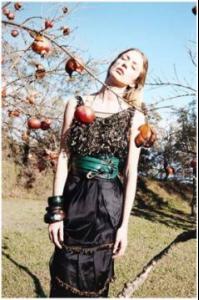
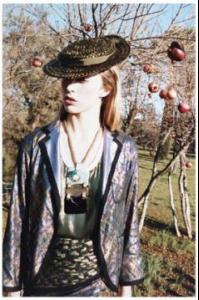
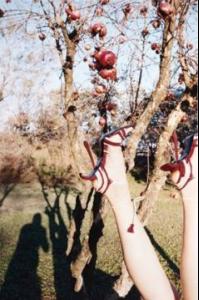
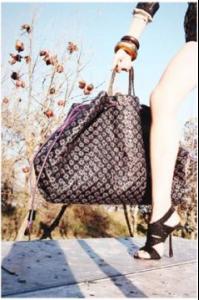
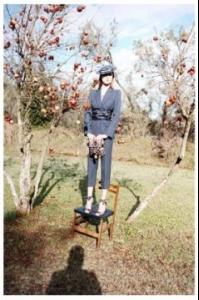
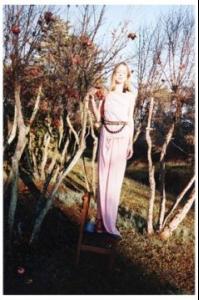
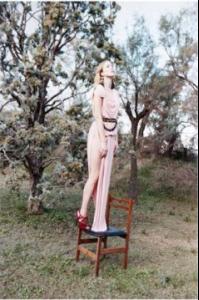
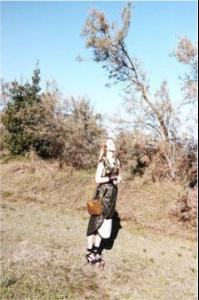
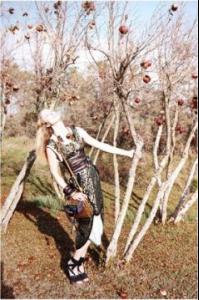
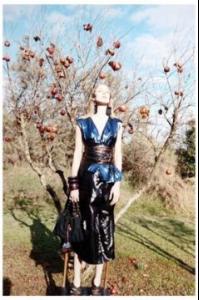
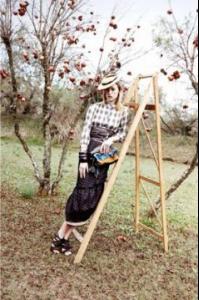
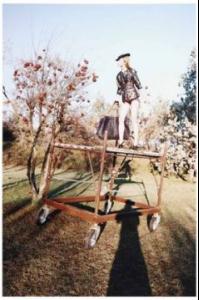
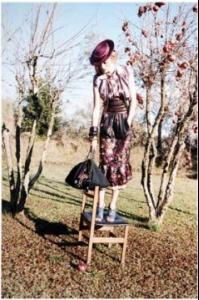
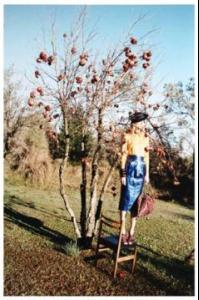
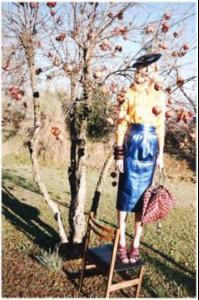
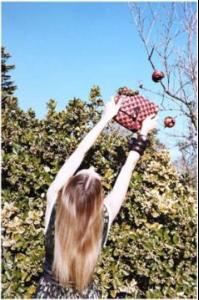
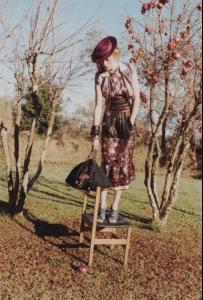
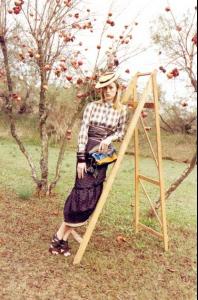
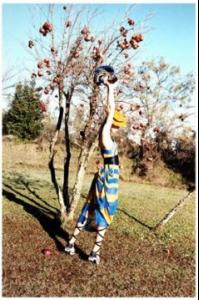
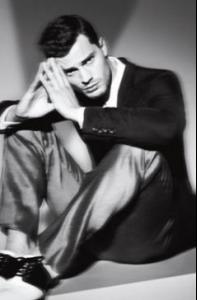
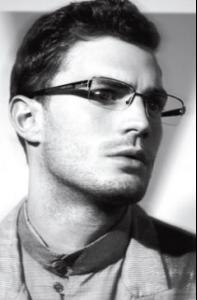
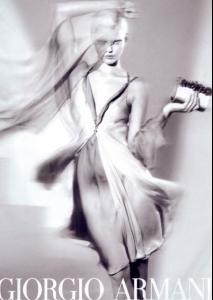
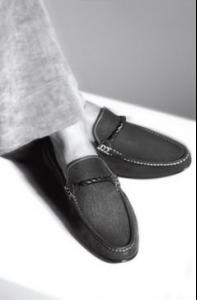
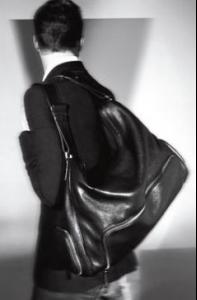
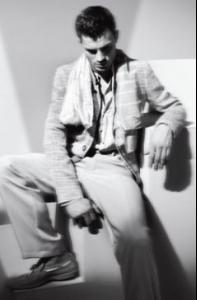
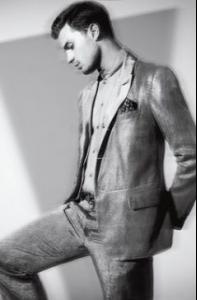
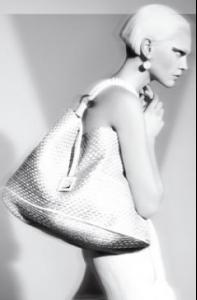
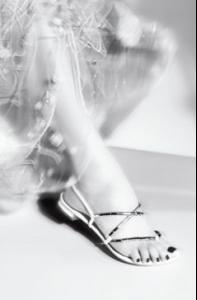

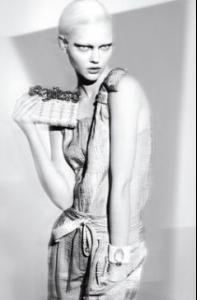
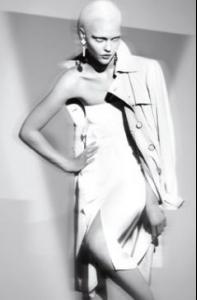
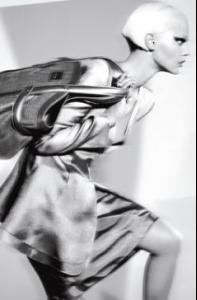
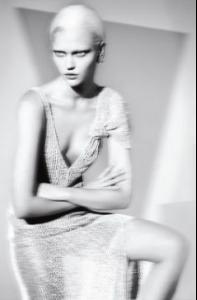
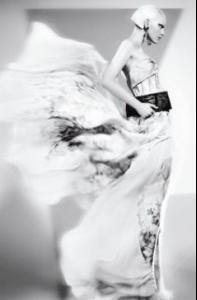
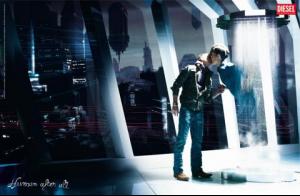
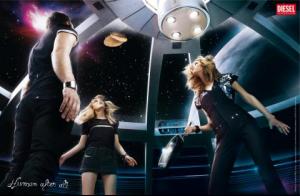
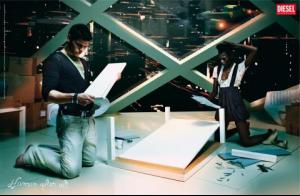
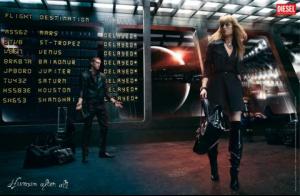
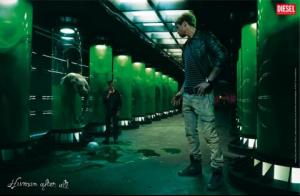
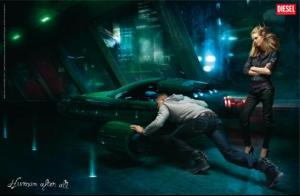
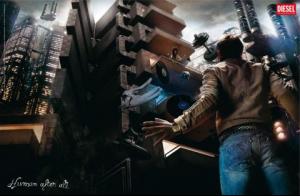
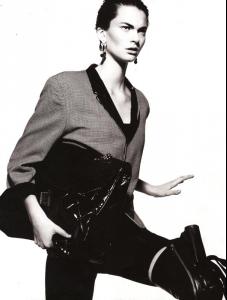
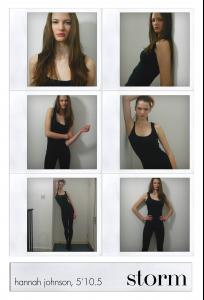
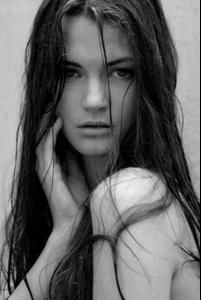
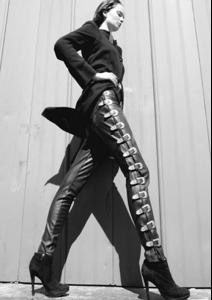
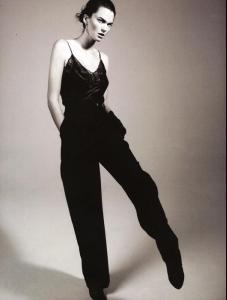

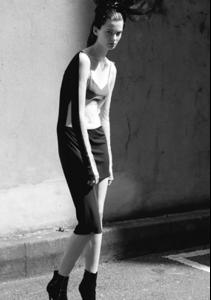
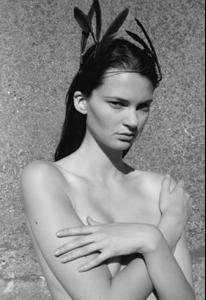

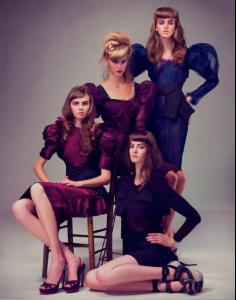

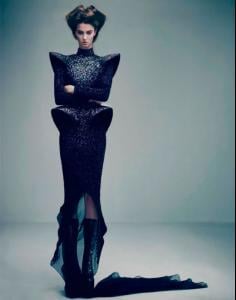


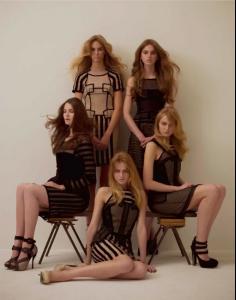
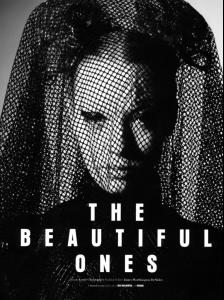
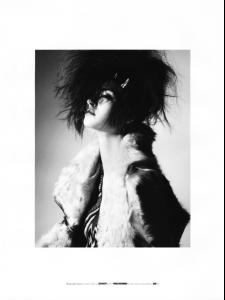
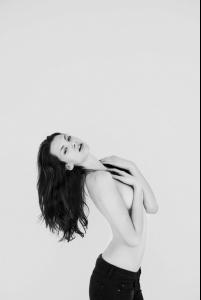



Stray Cats
in Male Musicians
Posted
Stray Cats are an American rock band formed in 1980 by guitarist/vocalist Brian Setzer (Bloodless Pharaohs/Brian Setzer Orchestra), bassist Lee Rocker and Slim Jim Phantom (drums) in the Long Island town of Massapequa, New York. The group had numerous hit singles in the UK, Australia and the U.S. including "Stray Cat Strut", "Sexy and 17", "I Won't Stand in Your Way", "Bring it Back Again", and "Rock This Town", which the Rock and Roll Hall of Fame has listed as one of the 500 most important songs in the history of rock and roll. By 1982 the Stray Cats were an international sensation that influenced the world of music as well as fashion.
History
Formation and move to UK
The group, whose style was based upon the sounds of Sun Records artists and other artists from the 1950s, were heavily influenced by Eddie Cochran, Carl Perkins, Gene Vincent and Bill Haley & His Comets. The Stray Cats quickly developed a large following in the New York music scene playing at CBGB'S and Max's Kansas City as well as venues on Long Island. When the Cats heard a rumor that there was a revival of the 1950s Teddy Boy youth subculture in England, the band moved to the UK. They then spearheaded the nascent rockabilly revival, by blending the 1950's sun studio sound with modern punk musical elements. In terms of visual style the Stray Cats also blended elements of 1950 rockabilly clothes such as wearing drape jackets, brothel creepers and western shirts with punk clothes such as tight black zipper trousers and modern versions of 1950's hair styles.
In the summer of 1980 the Cats found themselves being courted by the elite of the music world including Virgin Records, Stiff Records and Arista records. Word quickly spread and soon members of the Rolling Stones, The Who and Led Zeppelin were at their shows. After a gig in London, Stray Cats met producer Dave Edmunds, well known as a roots rock enthusiast for his work with Rockpile and as a solo artist. Edmunds offered to work with the group, and they entered the studio to record their self-titled debut album, Stray Cats, released in England in 1981 on Arista Records. They had three hits that year with "Runaway Boys", "Rock This Town", and "Stray Cat Strut". The UK follow-up to Stray Cats, Gonna Ball, was not as well-received, providing no hits. But the combined sales of their first two albums was enough to convince EMI America to compile the best tracks from the two UK albums and issue an album (Built for Speed) in the U.S. in 1982. The record went on to sell double platinum in the US and Canada and was the #2 record on the Billboard album charts for 26 weeks.
Breakup and reunions
Musical and personal conflicts began to emerge in the ways that the individual members handled their new-found success; Phantom married actress Britt Ekland, while Setzer made guest appearances with stars like Bob Dylan and Stevie Nicks and became the concert guitarist for Robert Plant's Honeydrippers side project. In late 1984, the band added former BMT's guitarist and Long Island native Tommy Byrnes on second guitar and harmony vocals, and after a European and US tour which ended at the New Orleans World's Fair, parted ways. Rocker and Phantom formed a trio called Phantom Rocker & Slick (the "Slick" being former David Bowie guitarist Earl Slick) which contained the single "Men Without Shame", guest musicians on this record included both Keith Richards of the Rolling Stones and Nicky Hopkins on the piano. Setzer went on to a solo career, retaining Byrnes and exchanging his rockabilly focus for a more wide-ranging roots rock/Americana sound on albums such as 1986's The Knife Feels Like Justice. In 1986, the Stray Cats reunited in Los Angeles, and recorded the covers-heavy Rock Therapy. In 1989, they reunited once again for the album Blast Off!, which was accompanied by a tour with US blues guitarist Stevie Ray Vaughan. No longer with EMI America, they entered the studio with Nile Rodgers for the record titled Let's Go Faster, issued by Liberation in 1990. 1992's Dave Edmunds-produced Choo Choo Hot Fish , and after another covers album, Original Cool, the group called it quits again.
In 2004, the Stray Cats reunited for a month-long tour of Europe. A live album culled from those concerts, Rumble In Brixton, included one new studio track, "Mystery Train Kept A Rollin'." In 2007, they reunited once again for a successful and long awaited US tour with ZZ Top and The Pretenders. This was their first North American tour in over 15 years. In the 2000s, the band toured Europe as part of their Farewell Tour.
In 2008, for the first time in 18 years, the Stray Cats visited Australia and New Zealand which included several consecutive sold out shows of their Farewell (Australia) Tour.[1]
Band members' follow-up careers
The Stray Cats have reunited periodically for live performances. Setzer is still part of his 1990s swing-revival band The Brian Setzer Orchestra. Rocker continued recording and touring throughout the 90's and on to today. His albums include "Black Cat Bone" and "Racin' the Devil" on the acclaimed Alligator records label as well as "Bulletproof" which has been picked as one of the best records of the decade by the Orange County Register newspaper. In addition to the Stray Cats, Rocker has recorded or performed with Carl Perkins, George Harrison, Ringo Starr, Willie Nelson, Leon Russell, Scotty Moore (Elvis' original Guitar man), Keith Richards and numerous others. Slim Jim Phantom plays the drums in another rockabilly band, 13 Cats, as well as the Rock and Roll band The Head Cat with Lemmy (Motörhead) and Danny B. Harvey (13 Cats, RocKats). The band was inducted into the Long Island Music Hall of Fame[2] on October 15, 2006. He is also an active member of the Love Hope Strength Foundation, a charitable organisation which was co-founded by Mike Peters of The Alarm, and which raises funds for cancer units.
Tours
Discography
Albums
[3]
UK singles
7" vinyl singles with catalogue numbers Issued on Arista Records:
Issued on EMI Records:
[3]
U.S. singles
Issued on EMI America Records
French singles
Issued on Arista Records
Arabella Eurodisc Distribution.
Band members
Current members